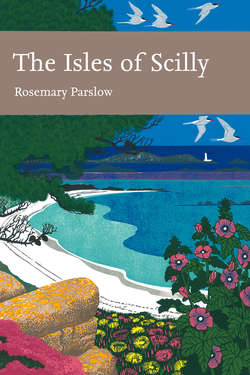Читать книгу The Isles of Scilly - Rosemary Parslow - Страница 46
THE BUILT-UP AREA
ОглавлениеAround the main harbour on the west of St Mary’s is Hugh Town (Fig. 26), the principal town in the islands, the administrative ‘capital’ where most of the main business of the islands takes place, with the Council offices, shops, banks, hotels, museum and the nearby industrial estate at Porth Mellon. The Council of the Isles of Scilly has unusual responsibilities, and although representing a very small population of approximately 1,600 (c.4,000 in summer) it has virtually the same powers as a county council. The offices of the Duchy of Cornwall (the landlord of the Isles of Scilly), the Wildlife Trust and other organisations are also mainly based in Hugh Town. The passenger ship RMV Scillionian sails from St Mary’s harbour, and with the airport forms the main link with the mainland. The present quay is built over an island, Rat Island, and out into St Mary’s Pool. From the harbour the inter-island launches and the ‘tripper’ boats link with the off-islands and run sightseeing trips.
FIG 26. A view of St Mary’s harbour, Hugh Town and the Garrison, May 2003. (Rosemary Parslow)
Much of the town is on the low-lying land that was originally a sand bar joining the promontory of the Hugh to the rest of St Mary’s between the Pool (harbour) and Porth Cressa. From there the town spreads up the slopes of the Garrison and Church Street. The proximity of the harbour and the beach has resulted in many coastal plants having become residents in the town. Portland spurge Euphorbia portlandica grows at the base and on top of some walls, tiny sea spleenwort Asplenium marinum ferns grow in crevices on many walls and four-leaved allseed Polycarpon tetraphyllum and rock sea-spurrey Spergularia rupicola along cracks in pavements. Some plants have become strongly associated with Hugh Town, including sand rocket Diplotaxis muralis, sweet alyssum Lobularia maritima and cineraria Pericallis hybrida. With all the small gardens around the town many garden plants and more exotic plants are able to escape into alleys and byways, so part of the fun for a botanist wandering around the streets is not knowing what discovery might be waiting around the next corner!
During the summer holiday season Hugh Town can be quite a bustling place. Every morning the holiday people stream down the main streets to the harbour, where they join the queue on the quayside for tickets and then embark on one of the launches that will take them to one of the other inhabited islands or, if the weather is good and the seas calm, on a trip around the Eastern Isles or Annet and the Western Rocks. On the calmest days there will perhaps be a boat going as far as the Bishop Rock lighthouse. This can be an exciting trip that guarantees close views of seabirds and seals. There is always a sea running beyond the Western Rocks, even in the calmest weather, giving the passengers something to boast about in the pub later. But sailing out among the Western Rocks, among the savage beauty of jagged islands and myriad splinters of rock just breaking the surface of the waves, is a graphic reminder of the hazards associated with the sea and Scilly. Reaching Bishop Rock means sailing over another long stretch of restless water beyond the Western Rocks towards the long finger of the lighthouse pointing skywards in the distance. As you sail beneath the lighthouse there is little sign of the rock on which it is built, and looking up at the tower above is an utterly awesome experience. The return of the tripper boats results in a reverse flow back up the main street from the quay as everyone returns for the evening. For a little while now the shops are busy. And if you are a birdwatcher it is time to check the blackboard where bird news is chalked up, hoping all the time you have not missed anything exciting.
On the opposite side of the island to Hugh Town is the hamlet of Old Town (Fig. 27). This was the main town and former harbour (the quay can still be seen) on St Mary’s in medieval times, with a castle where the Governor lived, but it was superseded by the better-fortified Hugh Town. There is little left of Ennor Castle
FIG 27. Old Town harbour with its old granite quay and the church, January 2000. (Rosemary Parslow)
now, just the mound on which it stood; presumably it was demolished and the stone used to build Star Castle. Despite improved sea defences and rebuilding of the sea wall and the road in 1996 it is not unusual to see sand-bags propped up against front doors or seaweed in the street in winter; the lower part of Old Town is another area under constant threat from the sea. Overlooking the Bay is Old Town Church, where the surrounding churchyard, with its different levels and terraces, surrounded by trees, provides a haven for many unusual species of plants. It is impossible to overlook the multi-coloured cinerarias that have escaped from cultivation and rampaged over all the walls, paths and old graves. Other plants growing in the churchyard include grassland species, ferns or garden escapes that find refuge among the gravestones and walls. Migrant birds are often located in the churchyard, and the sheltered conditions also attract many insects and even bats on calm evenings. Some of the nearby fields behind the church also have good arable weed floras. Not far from the church along the edge of the bay is a large isolated rock, Carn Leh, which is an important site for rare lichens.
